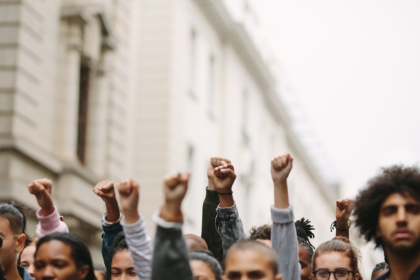Dancing in strip clubs, often seen as a legitimate and lucrative job, carries hidden dangers that go beyond the apparent risks. While many enter the industry seeking financial independence, the underlying vulnerabilities can expose dancers to more sinister threats, such as sex trafficking. This article delves into the often-overlooked connection between strip club dancing and sex trafficking, exploring the factors that contribute to this dark transition. We aim to provide a comprehensive understanding of the risks involved and discuss preventive measures to protect those in the industry.
The allure of strip clubs
Economic incentives
Strip clubs often attract individuals through the promise of high earnings and flexible working conditions. For many, the opportunity to make substantial money in a short amount of time is a compelling incentive. However, this financial lure can also act as a double-edged sword, placing dancers in vulnerable positions.
The cultural glamorization
Media and popular culture frequently glamorize the lifestyle associated with strip clubs, portraying it as exciting and desirable. This representation can skew perceptions, leading individuals to overlook the potential dangers associated with the environment.
The pathway to trafficking
Recruitment tactics
Traffickers frequently use strip clubs as hunting grounds to identify potential victims. They look for individuals who may be financially desperate, socially isolated, or those lacking a strong support network. The initial approach might be subtle, with traffickers posing as patrons, boyfriends, or even talent agents.
Coercion and manipulation
Once contact is established, traffickers employ various techniques of manipulation and coercion to entrap their targets. Promises of more lucrative opportunities, love and stability often transition into control tactics such as debt bondage, threats or outright violence.
The role of management
Lack of oversight
In some strip clubs, there is a notable lack of regulatory oversight, which can facilitate illegal activities including sex trafficking. The absence of strict monitoring allows traffickers to operate with impunity, often under the guise of legitimate business practices.
Complicity and negligence
There are instances where club management may turn a blind eye to the activities of traffickers, either due to financial incentives or due to a lack of awareness. This negligence plays a critical role in enabling the exploitation of dancers.
Legal and social challenges
Inadequate protection
Dancers in strip clubs often face legal ambiguities that leave them unprotected. The independent contractor status of many dancers complicates their access to legal protections typically afforded to regular employees, such as health benefits and workplace safety.
Stigma and isolation
The stigma associated with working in strip clubs can isolate dancers from their families and communities, making it difficult to seek help or report abuses. This isolation can be exploited by traffickers to further control and manipulate their victims.
Preventive measures and support systems
Education and awareness
Raising awareness among dancers, club owners and patrons about the signs of trafficking and the legal rights of workers can significantly mitigate risks. Education initiatives should also target the general public to reduce stigma and promote a more supportive environment for dancers.
Policy reforms
Advocating for stronger regulatory policies that classify dancers as employees rather than independent contractors can provide better protection and access to benefits. Additionally, enforcing stricter licensing requirements for strip clubs can help eliminate those that fail to meet safety and legal standards.
The lure behind the allure of strip club dancing
The intersection of strip club dancing and sex trafficking is a complex issue fueled by economic, cultural and regulatory factors. Understanding these connections is crucial for developing effective strategies to combat sex trafficking within the industry. By fostering a safer, more regulated environment and offering support and education to those within the strip club industry, we can begin to dismantle the pathways that lead from legitimate employment to exploitation. Awareness and proactive measures are key in ensuring the safety and dignity of all individuals in the nightlife entertainment sector.
This exploration not only raises critical questions about the nature of such establishments but also calls for a collective effort towards more ethical and protective practices that ensure the well-being of all employees.
This story was created using AI technology.
















